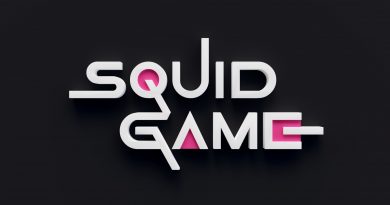Decoding the Tokenomics behind Mineable and Mintable Tokens.
“There is always a confusion lurking behind the concept of Mineable and Mintable tokens and most of the time both are considered to be the same. All the crypto enthusiasts must understand that both the tokens are fundamentally different and have different underlying methods for creation.”
What are Mineable Tokens?
The tokens that are created in the process of mining are known as the mineable tokens. Mining in the simple term means that the miners (validators of the network) have a task and are responsible for securing the network and producing new transactional blocks. This in the case of Proof-of-Stake (PoW) consensus as used by Bitcoin and Ethereum requires extensive computing power and in the case of Proof-of-Stake (PoW) consensus algorithm as used by Cardano requires staking of the ADA Tokens. To reward these miners for their activities new platform tokens are created and given to these miners for their hard work; BTC in case of Bitcoin, ETH in case of Ethereum and ADA in case of Cardano.
The Mineable Tokens are the platform specific tokens and are issued in accordance with the underlying consensus rules. The examples of the mineable tokens include BTC and ETH.
What are Mintable Tokens?
Mintable tokens are the tokens that are created without their own consensus mechanism in place. They make use of other smart contract platforms for the creation of the tokens. Ethereum is one of the largest and the most popular smart contract platforms that provides the capability of minting tokens on the basis of its ERC-20 standard. The minting of tokens is done by sending a transaction inside a token creation smart contract.
Minting is a call to the smart contract function to create an unlimited number of tokens without the requirement of spending computational energy or staking. The examples of mintable tokens include DAI, Decentraland (MANA) and Status (SNT).
Takeaways
- Mineable and Mintable tokens are often confused as the same but are fundamentally different.
- Creation of the mineable tokens require spending of energy in the form of computational power in case of PoW consensus or staking in the form of PoS Consensus mechanism.
- Creation of mintable tokens requires a call to the smart contract function. The tokens minted are based on the smart contract platforms standards such as ERC-20 standard of Ethereum blockchain.
Disclaimer: The article is meant for the educational purpose only and in no way it should be considered as financial advice. Own research on the topic is advisable.
Photo by Executium on unsplash
“There is always a confusion lurking behind the concept of Mineable and Mintable tokens and most of the time both are considered to be the same. All the crypto enthusiasts must understand that both the tokens are fundamentally different and have different underlying methods for creation.”
What are Mineable Tokens?
The tokens that are created in the process of mining are known as the mineable tokens. Mining in the simple term means that the miners (validators of the network) have a task and are responsible for securing the network and producing new transactional blocks. This in the case of Proof-of-Stake (PoW) consensus as used by Bitcoin and Ethereum requires extensive computing power and in the case of Proof-of-Stake (PoW) consensus algorithm as used by Cardano requires staking of the ADA Tokens. To reward these miners for their activities new platform tokens are created and given to these miners for their hard work; BTC in case of Bitcoin, ETH in case of Ethereum and ADA in case of Cardano.
The Mineable Tokens are the platform specific tokens and are issued in accordance with the underlying consensus rules. The examples of the mineable tokens include BTC and ETH.
What are Mintable Tokens?
Mintable tokens are the tokens that are created without their own consensus mechanism in place. They make use of other smart contract platforms for the creation of the tokens. Ethereum is one of the largest and the most popular smart contract platforms that provides the capability of minting tokens on the basis of its ERC-20 standard. The minting of tokens is done by sending a transaction inside a token creation smart contract.
Minting is a call to the smart contract function to create an unlimited number of tokens without the requirement of spending computational energy or staking. The examples of mintable tokens include DAI, Decentraland (MANA) and Status (SNT).
Takeaways
- Mineable and Mintable tokens are often confused as the same but are fundamentally different.
- Creation of the mineable tokens require spending of energy in the form of computational power in case of PoW consensus or staking in the form of PoS Consensus mechanism.
- Creation of mintable tokens requires a call to the smart contract function. The tokens minted are based on the smart contract platforms standards such as ERC-20 standard of Ethereum blockchain.
Disclaimer: The article is meant for the educational purpose only and in no way it should be considered as financial advice. Own research on the topic is advisable.
Photo by mohamed_hassan on Pixabay




